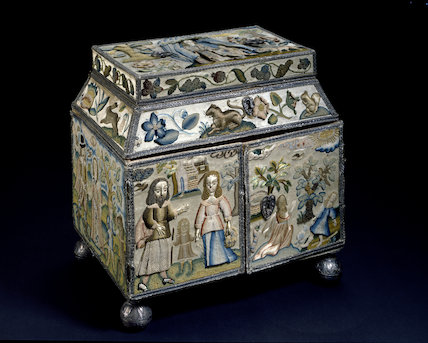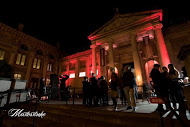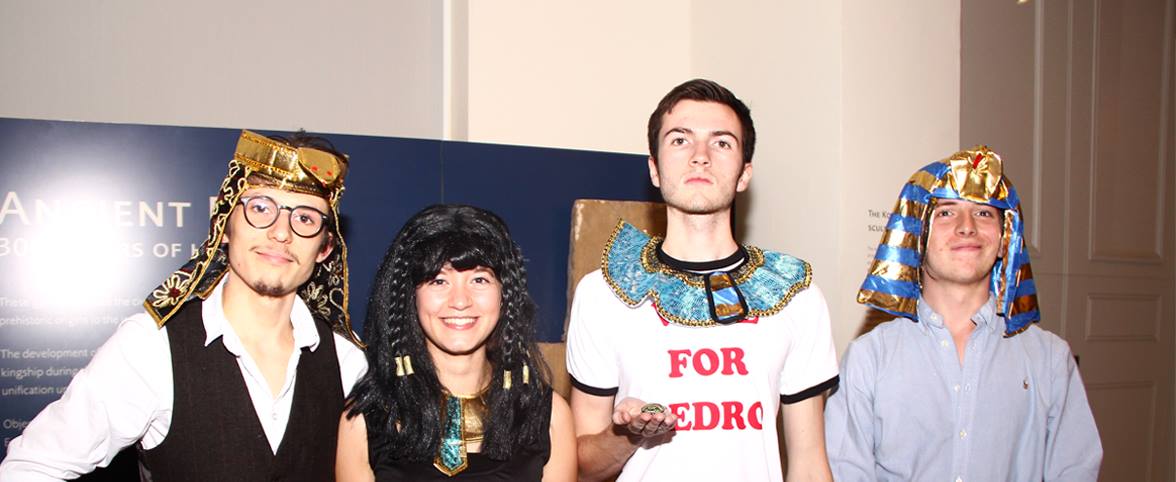written by Charlotte Kelly
Tour rooms 44 to 46 of the Ashmolean and you will find a wide array of 17th century European art. Look again though, and you may find something missing. Of the 60 or so pictures of the 17th century which have a definite attribution, every one was painted by a man. There are plenty of women depicted, but not a single work by a female artist. This is of course hardly unique to the Ashmolean, and a natural conclusion might be that women simply weren’t creating art in this period. Journey down to Room 5 in the basement however, and you will find a treasure trove of embroidery from the 17th century, the vast majority of it worked by female, largely anonymous, hands.
A number of the pieces, such as “Scenes from the Life of Abraham” and “Cushion: Couple Standing by a Fountain”, are examples of stumpwork, a style of raised embroidery which achieved popularity in 17th century in England. Stumpwork embroidery is commonly found mounted on boxes, mirror frames and other small household goods, and worked using a variety of silk and metal threads, small pieces of appliquéd fabric and beads. The most common scenes depicted are biblical stories, though secular scenes drawn from printed pictorial sources are also found (“The Four Continents”). Typical to stumpwork is a disregard for scale and perspective- an examination of the embroidery on the right door panel of “Scenes from the Life of Abraham” reveals a caterpillar half as large as the nearby figure of Hagar, and apparently floating in mid air towards Hagar’s cloak. This is no indication of a naivety of the embroiderer; rather, it simply arises from a desire to showcase a variety of techniques in a way which would be impossible if the animals were all kept to scale.
The makers of these pieces of embroidery were predominantly young wealthy women, for whom these elaborate embroidered scenes served as the crowning achievement of their juvenile studies in embroidery. Their names are largely lost, which makes “Scenes from the Life of Abraham” all the more exciting, because we have both the name of the embroiderer, and some information about its creation. The maker was one Miss Bluitt, later Mrs Payne, and the box was created while Miss Bluitt was at school in Hackney-a popular site for girls’ schools, on account of its supposedly healthier air- in the years immediately preceding the Plague.
It is easy to imagine that embroidery was yet another means by which young women were confined to the home, their energies directed into time-consuming works displaying their feminine virtue. Certainly to complete an elaborate stumpwork box would have been the work of months, if not years. The work involved in making the detached buttonhole sections found on “Scenes from the Life of Abraham” alone would have been immense. Embroidery, requiring diligent sedentary work in the domestic sphere, was popularly linked in the pamphlets of 17th century with womanhood. It is no accident that Sarah, the dutiful wife of Abraham, is depicted in a number of stumpwork and canvas work works in the Ashmolean.
We can’t be sure how the young women embroidering these boxes felt about their creations. Some certainly found it frustrating; Lucy Hutchinson, daughter of the lieutenant of the Tower of London, wrote “and for my needle I absolutely hated it.” There are suggestions though that for at least some women, embroidery represented not a repression but rather a means of self-expression.
Rozika Parker, in her excellent and very readable book, “The Subversive Stitch”, points out that embroidery disproportionately shows biblical heroines, often in positions of power. The story of Esther, which is the subject of several pieces in the Ashmolean, shows a woman of bravery assuming a role in the masculine business of politics. The story of Sarah can also be understood not as wifely submission, but, as is given prominence on the left door of “Scenes from the Life of Abraham”, as demonstrating Sarah’s power in persuading Abraham to send away Hagar.

WA1947.191.315 Embroidered box, scenes from the Life of Abraham
Due to the fragility of textiles from the 17th century, pieces from the Ashmolean’s wide collection of stumpwork and canvas work are frequently rotated. Study whichever pieces are on display, and you will find objects which are testament both to a turbulent period in social history and to the creative expression of their makers. Women were creating works of art in the 17th century; it is simply that we all too often ignore embroidery as “women’s work.”
Object details:
WA1947.191.315
Embroidered box, scenes from the Life of Abraham
Description: silk, linen and metal threads, hair, peacock feathers, pearls and wire mounted on a wooden carcass with silver fittings. The left section of Sarah’s dress is a later painted fabric imitating the original tent stitch embroidery; Appliqué, detached needlepoint, cut pile stitches, satin stitch and tent stitch.
Artist
Anonymous, English, possibly Miss Bluitt, later Mrs Payne
Date
c. 1665
More info here


